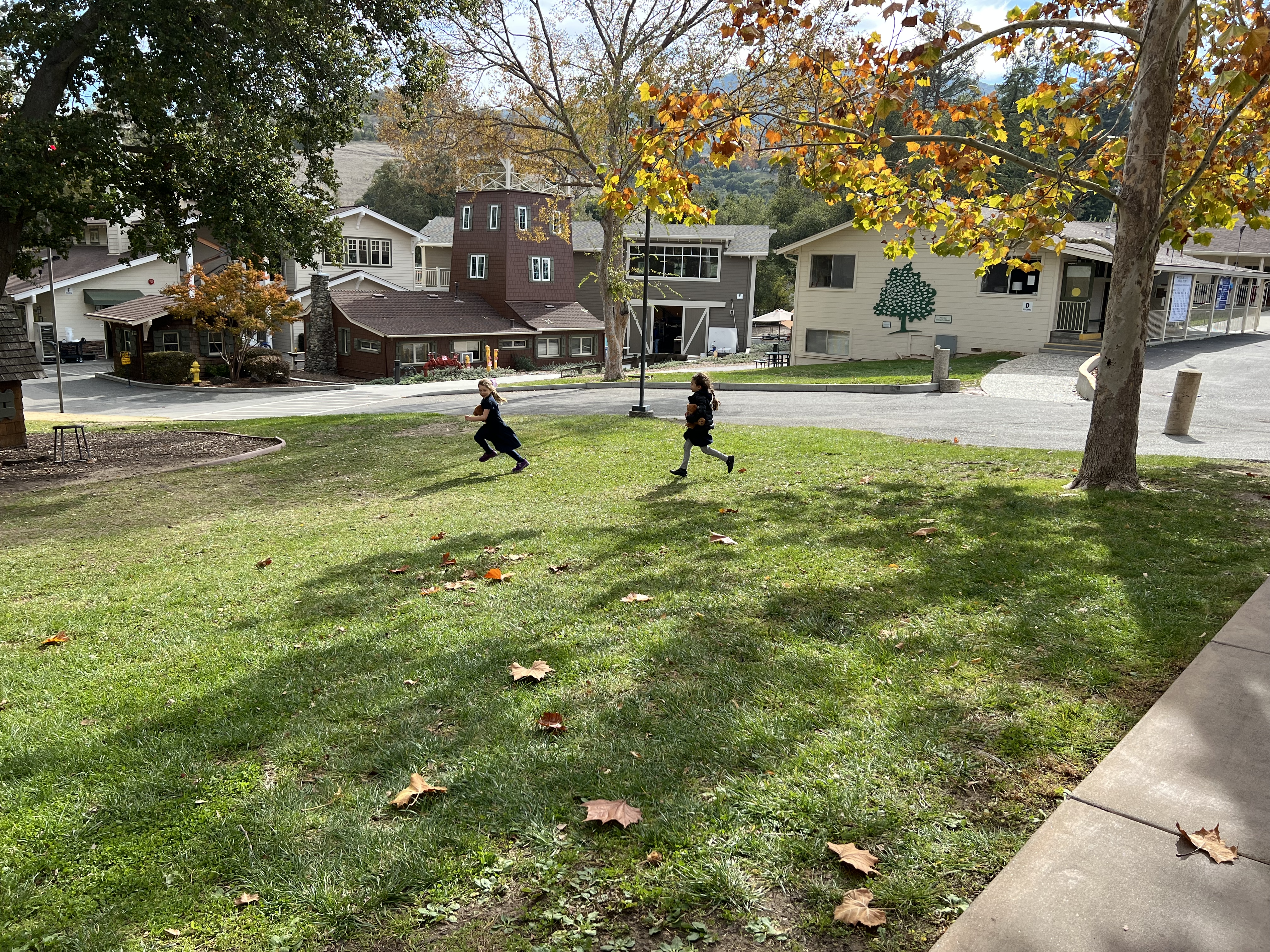Contributed by Erin Schwartz, Director of Communications
“Come to Persimmon. There’s something really cool going on right now.”
When 7th/8th grade history teacher Ms. Gingery invited me to visit two of her classes because the students would be experiencing yoga, I was fascinated. I was also excited to see another example of exciting hands-on learning meshing with academic study.
When I arrived, the room was quiet, save a few giggles from around the room as students balanced on their hands and feet. Ms. Gingery explained that the children were studying religions in ancient civilizations, and this unit was dedicated to Hinduism in India. As a practice that began in India, yoga enabled the students to engage with one of the ways that the traditions of Hinduism is alive and practiced in cultures around the world today. I appreciated how students were encouraged to try something new and immerse themselves into a cultural practice that would inspire curiosity within our students to learn more about Hinduism. It could also inspire our young learners to delve deeper into contemporary Indian culture and a deeper investigation of how we have assimilated and adopted these ancient traditions worldwide.
As long arms and legs were reaching up towards the ceiling in the “peaceful warrior” pose, guided by 3rd grade teacher and yoga practitioner, Ms. McHugh, I quickly realized that this was about so much more.
 Middle school is a time of great change and challenge for many young boys and girls, as they grapple with changing bodies, social circles, and the messy, complicated transition that comes with adolescence. Academically, these students are the ones who are pushing themselves, challenging their workloads and the bounds of their learning to juggle intensive projects, honors classes, essays, tests, an athlete’s schedule, and the looming pressure of high school decisions. In a world that stops for no one and that seems to race forward ever more quickly, our young people risk the onslaught of stress under the overwhelming weight of all that they have to face every day at school and at home.
Middle school is a time of great change and challenge for many young boys and girls, as they grapple with changing bodies, social circles, and the messy, complicated transition that comes with adolescence. Academically, these students are the ones who are pushing themselves, challenging their workloads and the bounds of their learning to juggle intensive projects, honors classes, essays, tests, an athlete’s schedule, and the looming pressure of high school decisions. In a world that stops for no one and that seems to race forward ever more quickly, our young people risk the onslaught of stress under the overwhelming weight of all that they have to face every day at school and at home.
“Ado muka svasana…urdva muka svasana.” Ms. McHugh’s soothing voice guides our gangly students from one fluid moment to the next. As time passes, I see tense muscles relax, excited chattering lulling to a self-reflective quietness, and students who are learning to practice mindfulness and self-care, skills just as vital as understanding the underpinnings of Hinduism.
I appreciate the intentional consideration, care, and passion with which our expert teachers donned her cap as advisor to craft a social-emotional learning experience highlighting the importance of respecting one’s mind, body, and health. We encourage our students early on to practice self reflection and to build in time for self-care, after all. It is so rewarding to see that as our students grow (along with their list of commitments), we still make that a priority.
Some of the immediate reflections from students included:
I didn’t worry about the tests or the work.
It helped me with stress.
It was nice to relax.
The day after, students considered this exercise further and here were some of their thoughts:
No one was getting at each other. Usually a lot of things “happen” in our grade. Things become a big deal, issues. We didn’t have a lot of that after.
One student even spoke about being able to work for three hours on a difficult school project. Instead of getting upset and engaging in destructive behavior when hiccups arose, this student was able to stay calm and work through.
These students were given such a valuable opportunity, in the midst of a busy school day and a time in their lives where everything is a whirlwind. It was an experience that resonated equally with both boys and girls whose focus and commitment to learning more about their bodies and their overall well-being was touching and inspiring. I am grateful that the size of our school and the relationships we foster allowed this time happen on a personal level between teacher, advisor, and student. I have every hope that these students will take the lessons, experiences, and skills they learned here and carry them on into their increasingly more demanding lives beyond Hillbrook.
As we head into another busy time for our school community, I want to leave you with some final thoughts from our students’ yoga session:
I like this.
I could do this all day.
“Can we stay here?”
While we can’t all stay here at Hillbrook forever, the experiences, skills, and moments that we have shared will stay with each of us, wherever our journeys lead.
Interested in educating your pre-teen or teenager on social-emotional care for overall health?
If you would like to learn more about how we, as parents and educators, can inspire mindfulness in our pre-teens and teenagers, the Huffington Post shared some great tips and resources in their article, “Teaching Mindfulness to Teenagers: 5 Ways to Get Started.” Some of their ideas include: making mindfulness a priority for everyone in your household – adults included- and teaching children about their brain. Did you know building in time for meditation can help increase concentration (and even improve performance on tests)? There is even a great list of helpful apps that aid with rest, relaxation, and rejuvenation.

